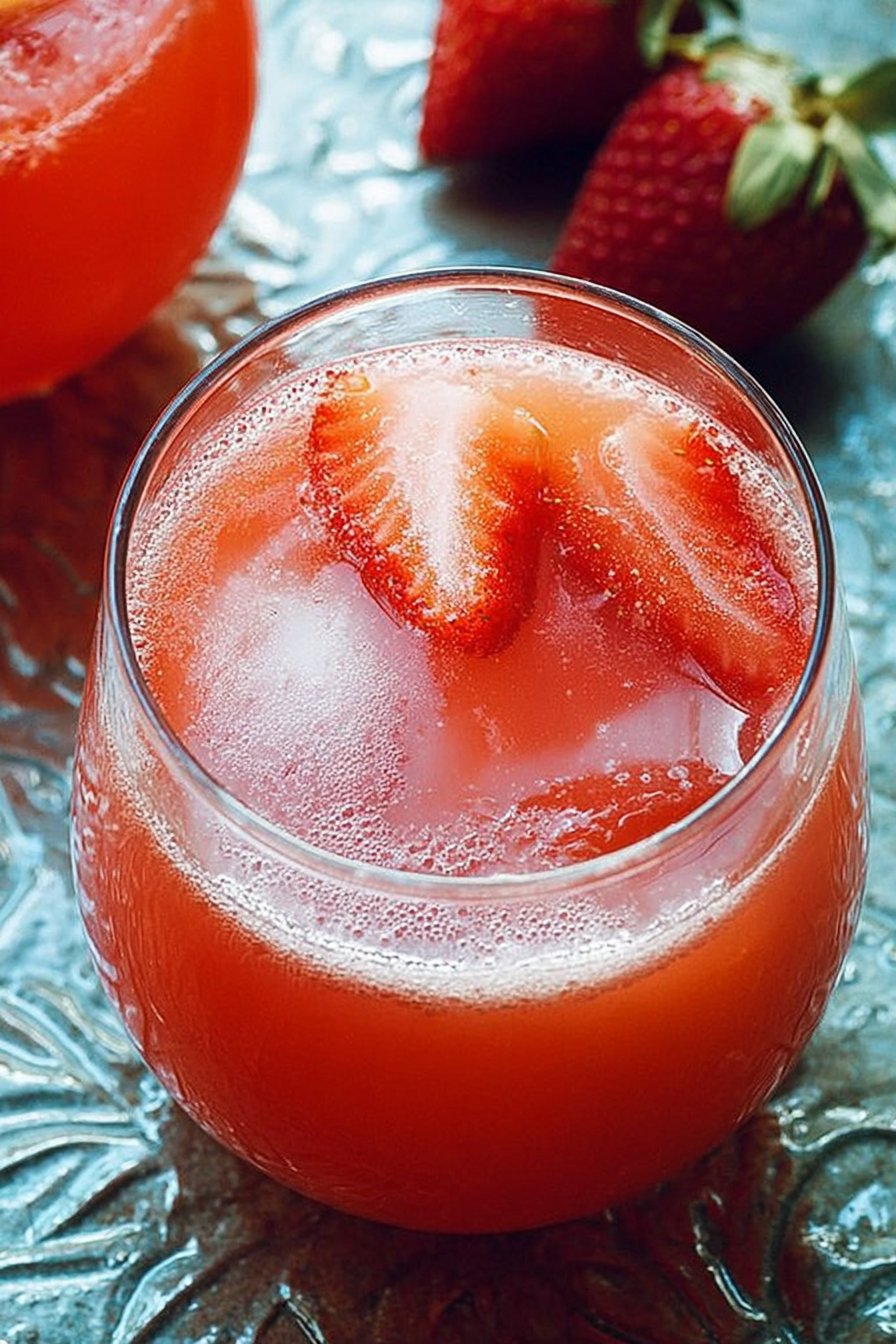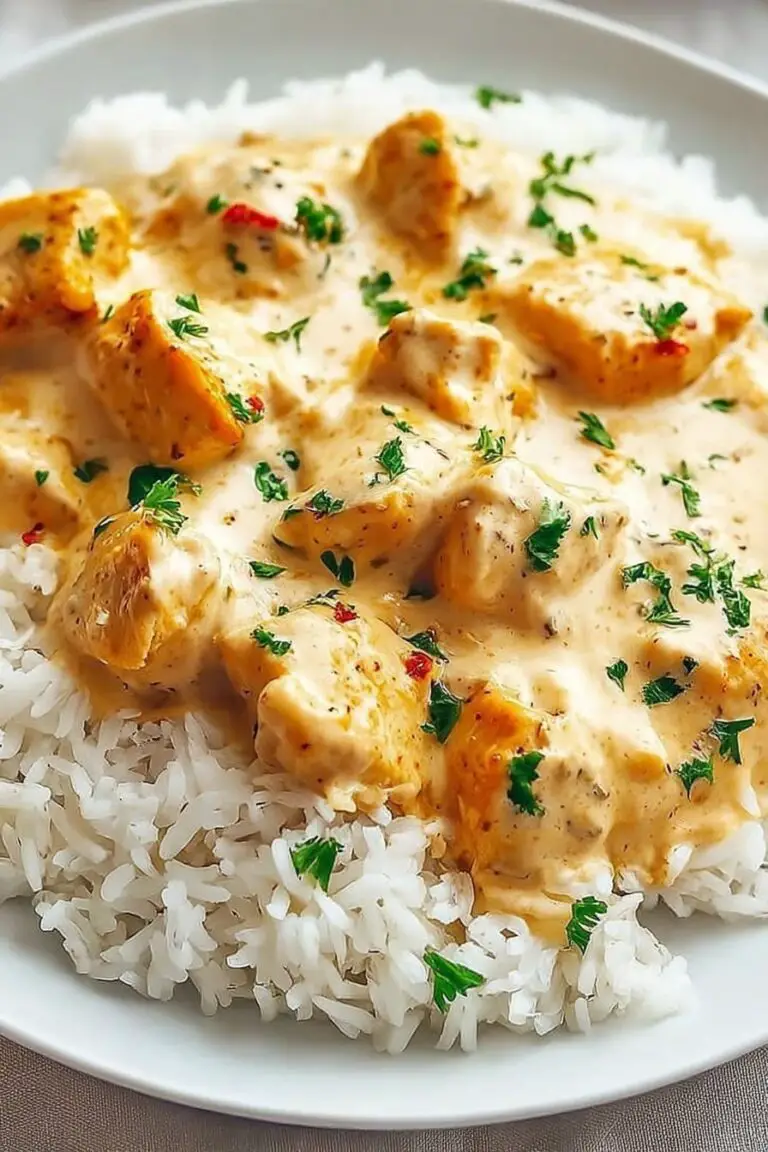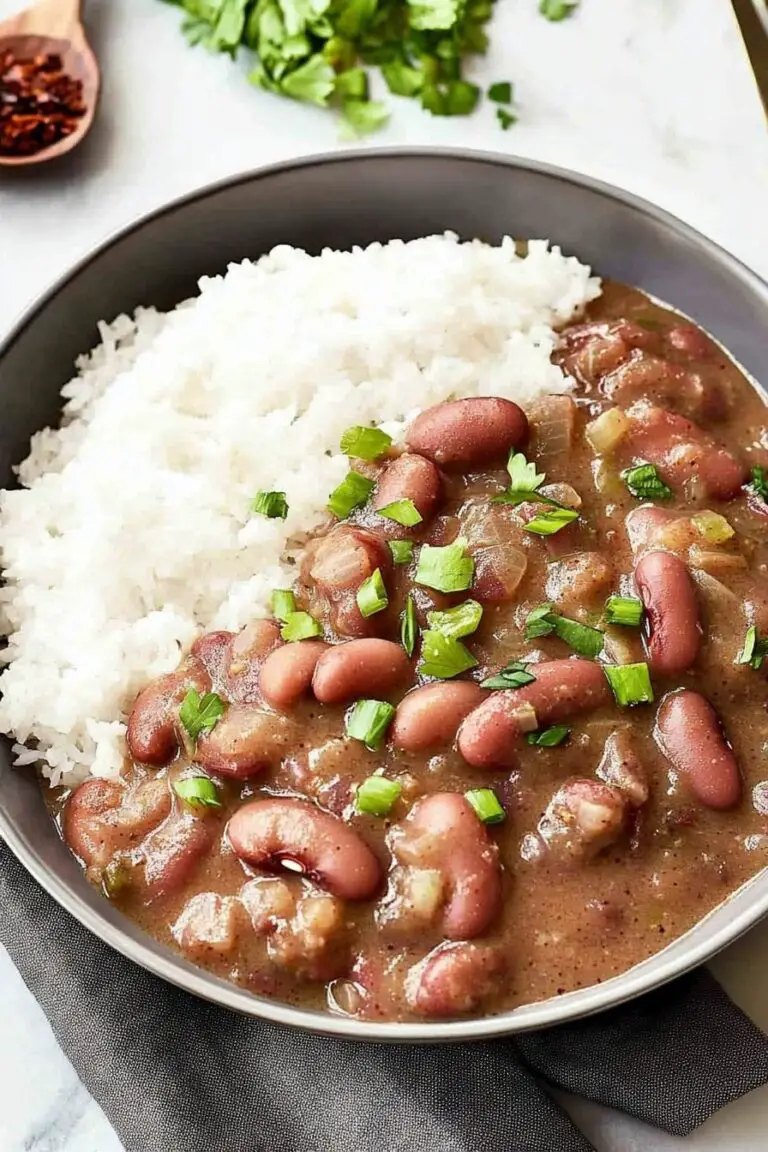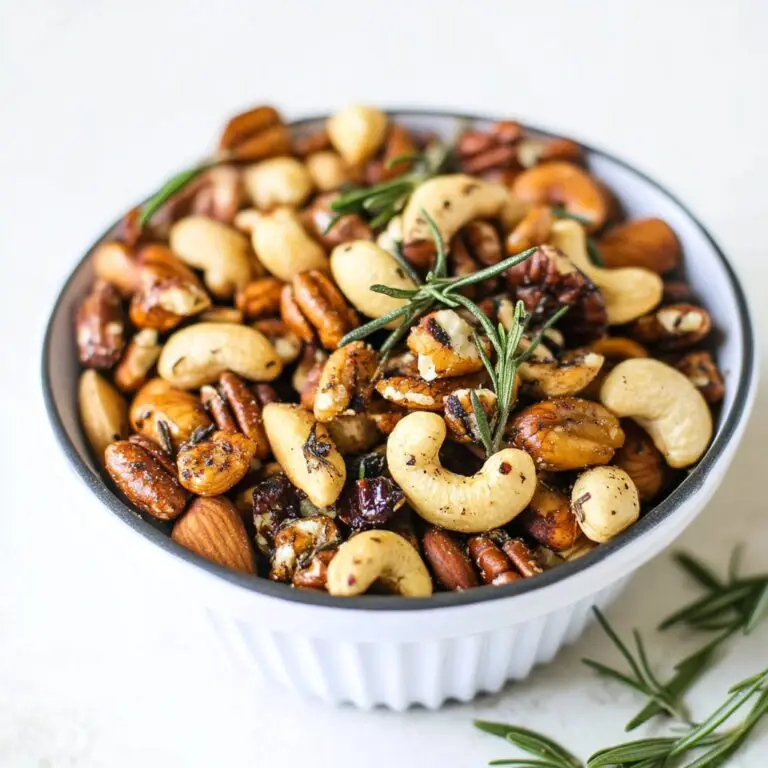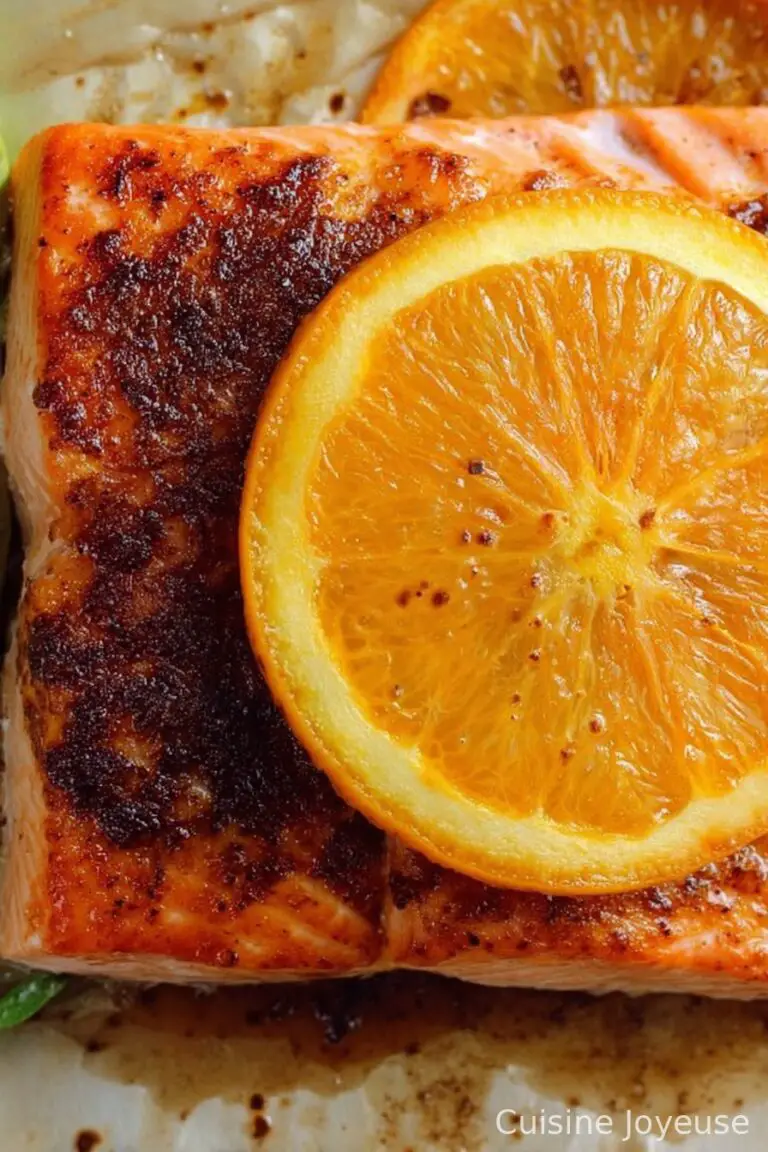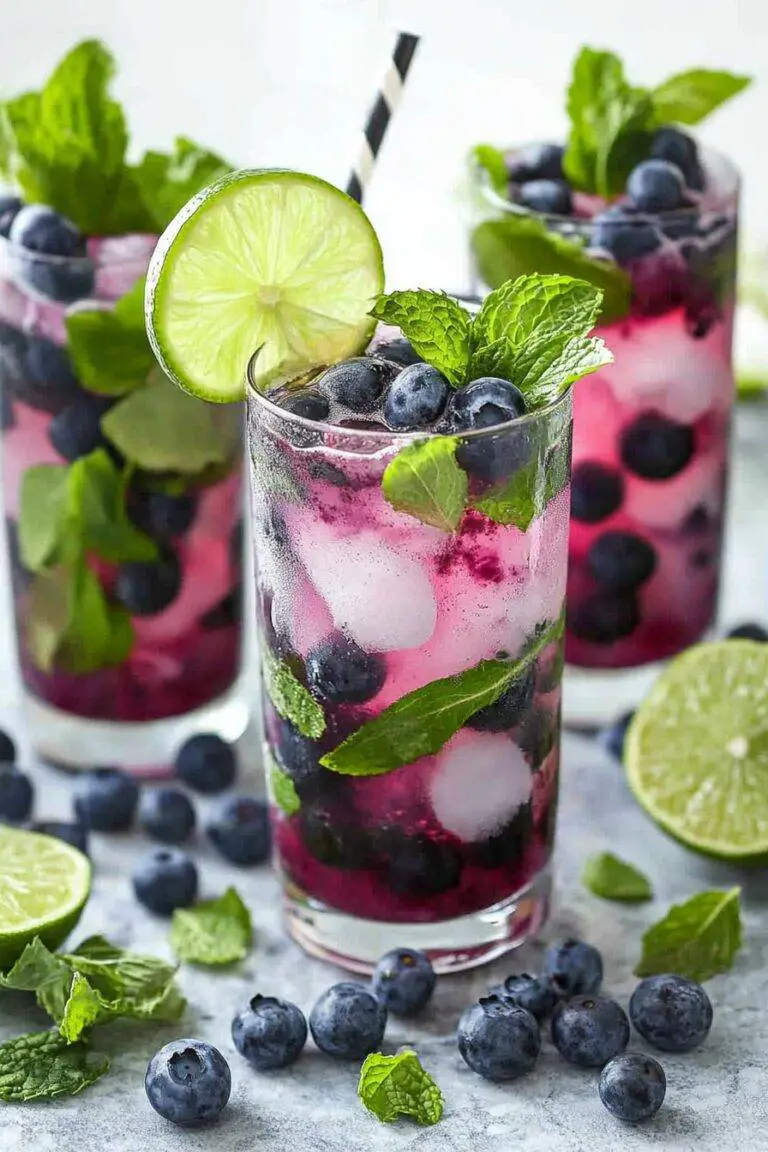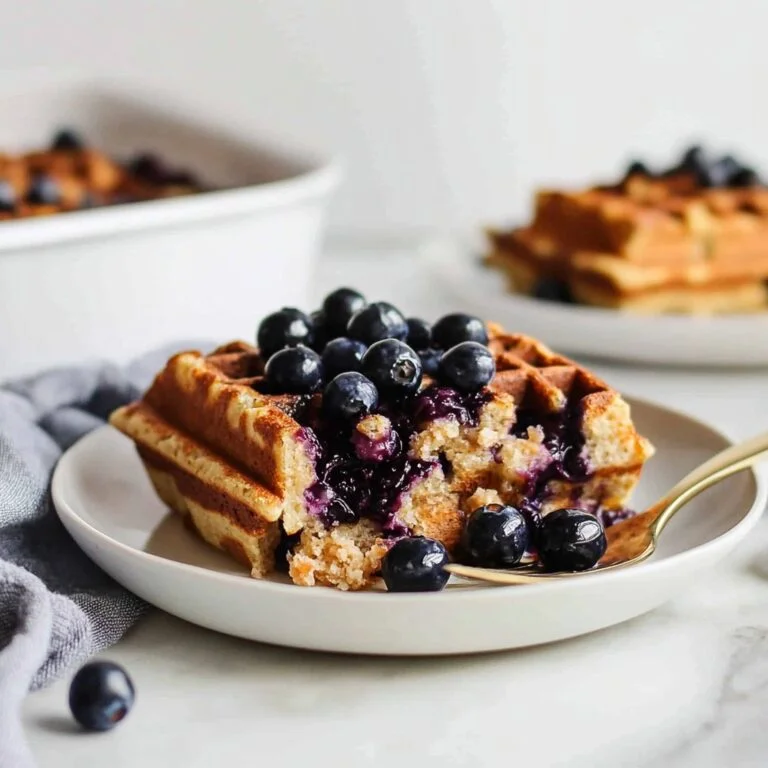Easy Strawberry Lemonade
Catching Up Over a Glass of Strawberry Lemonade
So, here’s the thing. Every time summer rolls around and the weather starts acting like it owns the place, I find myself craving something bright (and cold as all get out). Enter my easy strawberry lemonade — which, honestly, started because I was trying to use up a mountain of not-so-perfect strawberries I bought on impulse at the market. I’m not saying this will solve all life’s problems, but it sure makes a sweltering afternoon more tolerable.
Actually, funny story: the first time I made this, I dumped in way too much sugar and it tasted like the sort of thing only a hummingbird would love. Lesson learned! Oh, and if you hear my kids in the background slurping their glasses dry, that’s just a bonus soundtrack.
Why You’ll Love Making This (And Drinking It!)
I whip this up when I want something fuss-free, or when my family is dropping hints about getting “real” lemonade instead of the stuff from the bottle. They go bonkers for it, probably because it’s tart but not mouth-puckering, and the color makes it look like I’ve put in way more effort than I actually have (not that I’m complaining).
If you’ve ever struggled to get strawberries to blend smoothly, trust me, you’re not alone — I used to end up with weird little lumps (which, honestly, kids find hilarious). But once I started straining the purée, everything just…clicked.
Let’s Talk Ingredients (And Swaps for When You’re in a Pinch)
- Strawberries: About 2 cups, hulled. Fresh is great, but I’ve used frozen ones too (just thaw ‘em first or you’ll wreck your blender). My grandma swore by the locally grown ones, but supermarket berries are fine by me.
- Lemons: 4 to 6 big ones, depending on how juicy they are. I’ve been known to use those little plastic lemon-shaped bottles in a pinch — no shame here.
- Sugar: Half a cup, give or take. I occasionally sub in honey (use less, it’s sweeter), or toss in agave when I’m feeling fancy.
- Water: Around 4 cups; start with 3 if you like it more intense and add more to taste.
- Optional: A few mint leaves or a splash of sparkling water if you’re feeling wild. My cousin adds a pinch of sea salt — it’s odd but kinda works.
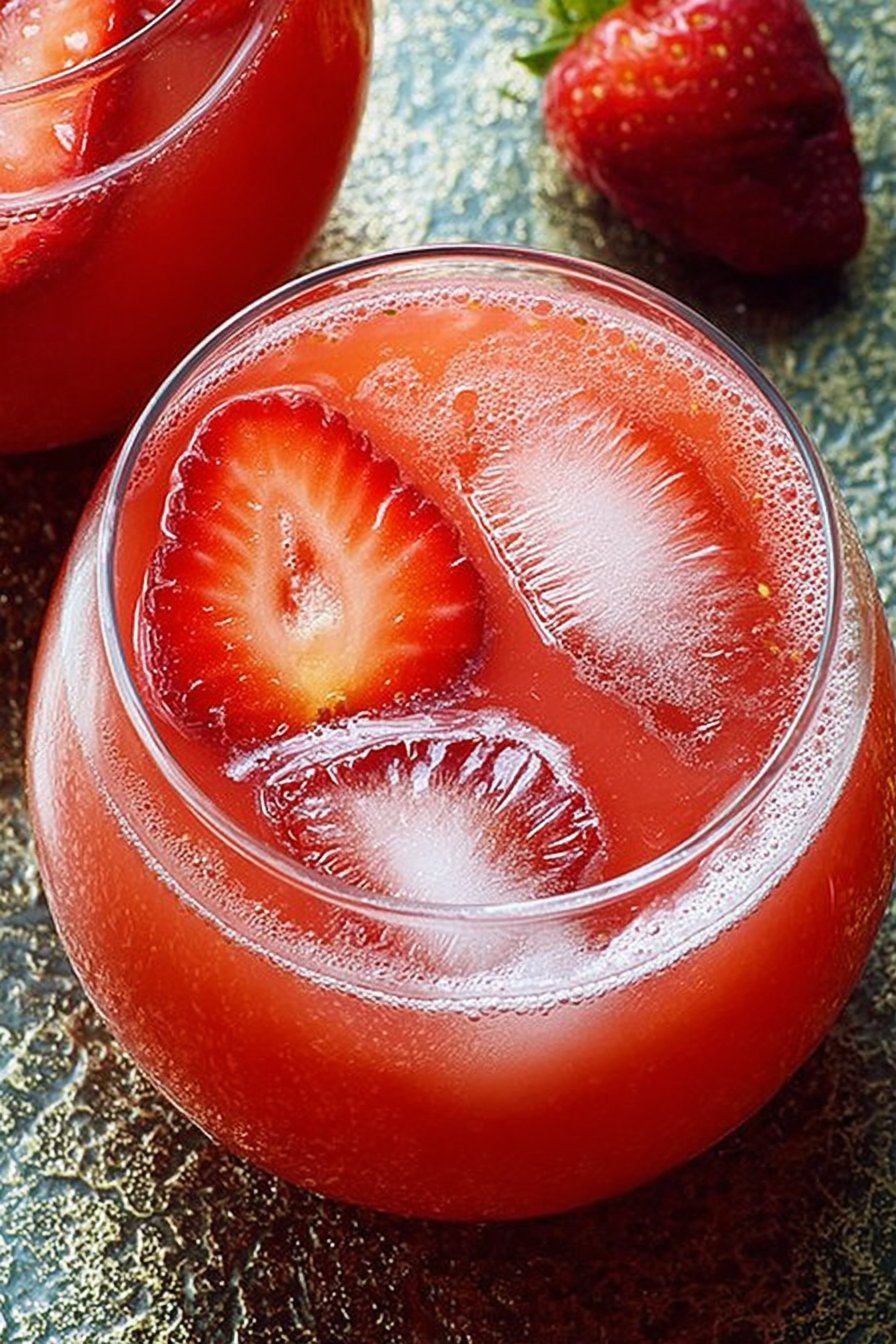
How I Actually Make This (Warts and All)
- Start with the strawberries. Chuck them in a blender with half the sugar and about a cup of water. Blitz until it looks like a pink smoothie. Don’t panic if there are seeds or bits, we’ll deal with those.
- Strain the puree. (This is where strawberry seeds like to try and ruin your day.) Pour it through a mesh strainer into a big jug. If you skip this, you’ll have floaty bits. Sometimes I skip it when I’m in a rush, but then my youngest complains about the “weird texture.” Up to you.
- Squeeze your lemons. Get every drop — roll them on the counter first, it sort of works. If you accidentally get a seed in, just fish it out. I usually do.
- Combine it all. Add the lemon juice to your jug with the strawberry mix, the rest of the water, and sugar. Stir like you mean it. Taste, and add more sugar or water if you think it needs it. This is where I sneak a taste (or two, honestly).
- Chill. You can serve it right away with loads of ice, or let it sit in the fridge for an hour so it gets really cold. I think it tastes better the next day, if you can wait that long.
Some Notes I’ve Picked Up (Usually the Hard Way)
- If you use frozen strawberries, your lemonade might get a bit frothy. Not a problem, but… just a heads up.
- Once I tried using brown sugar. It made the color a bit muddy, but the flavor was really interesting. Not for everyone though.
- Lemons are unpredictable beasts — taste them before you juice! Sometimes they’re crazy sour.
- If you over-dilute, toss in a bit more lemon or strawberry to perk it back up.
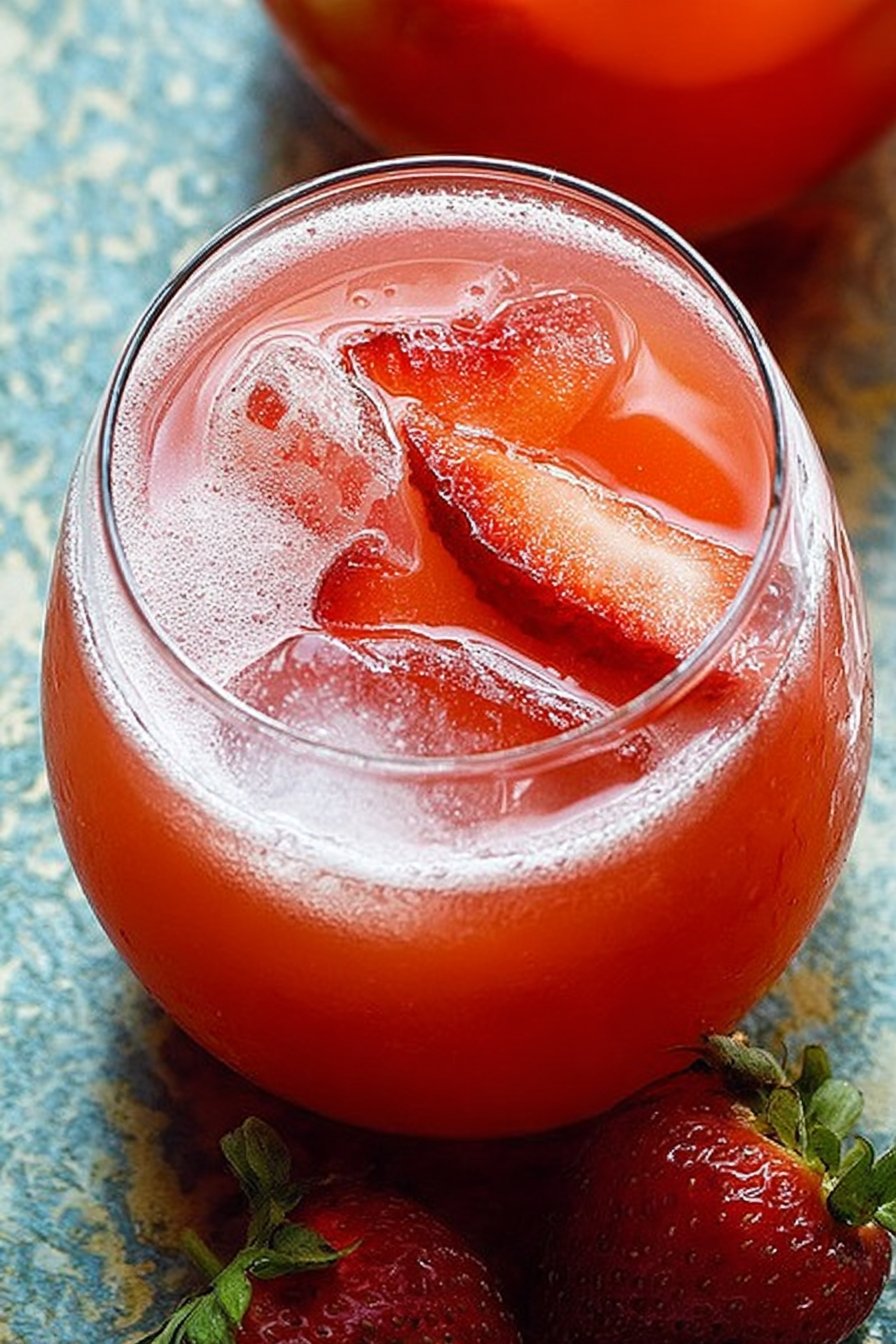
Variations I’ve Tested (With Mixed Results, Honestly)
- Swapping half the water for club soda: makes it fizzy, which is fun for parties. My husband says it tastes “fancy.”
- Adding a splash of elderflower cordial: it’s a little floral, a little sweet — pretty good, but not for the kids.
- Once, I tried blending in blueberries too. Turned an odd color and tasted muddled — wouldn’t recommend, but hey, you might like it.
What If You Don’t Have All the Equipment?
No blender? No biggie. Just mash the strawberries with a potato masher or even a fork. It’s a bit more rustic, but I kind of enjoy that chunky vibe sometimes. Also, if you don’t have a fine mesh strainer, I’ve used a clean dish towel (just don’t use your favorite one — learned that the colorful way).
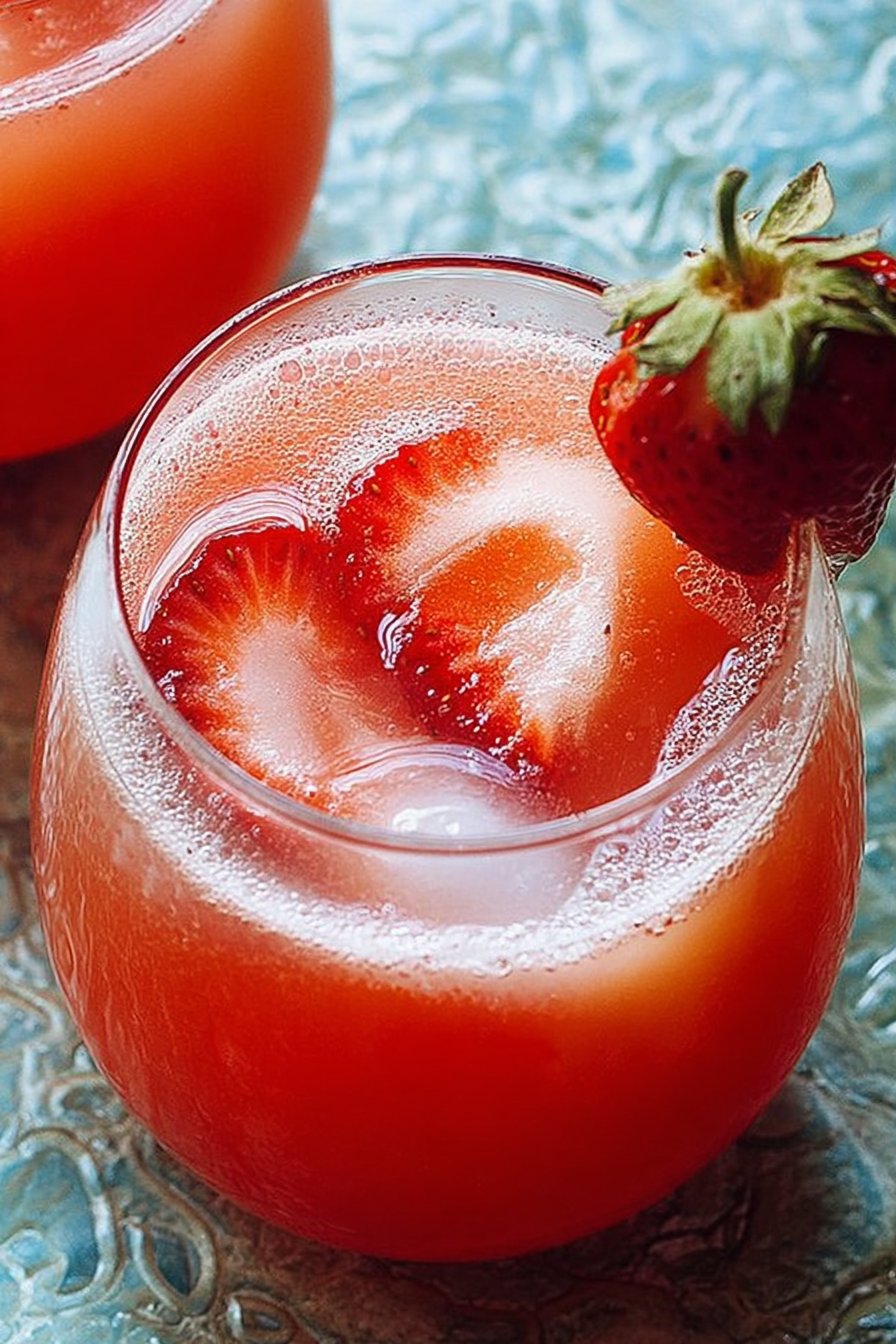
Storing Your Lemonade (If It Lasts That Long)
Pop it in the fridge in a big jug or a couple of mason jars. It’ll keep for 2 or 3 days, in theory, but honestly, it never makes it past the first 24 hours around here — I usually spot my kids refilling their glasses before it’s even cold. If you do somehow have leftovers, give it a quick stir before serving because it tends to separate a bit.
How We Serve It (And Some Odd Traditions)
I like to pour it over heaps of ice (sometimes with a sprig of mint, just to pretend I’ve got it all together). My sister-in-law insists it’s best with a splash of vodka when we’re hanging out on a Friday night…I’m not arguing. For picnics, I stick it in an old thermos and, weirdly, that keeps it extra cold even when the sun’s out in full force.
Pro Tips, Learned the Hard Way
- I once tried to skip the straining step to save time. Big mistake — my youngest declared it “hairy lemonade.” Lesson: strain it if you want it smooth.
- Don’t rush the chilling. Warm lemonade is just…sad. Actually, I find it works better if you make it ahead and let the flavors get comfy overnight.
- When in doubt, add more lemon. You can always sweeten it up, but you can’t go back if you make it too sweet from the get-go (trust me, I tried!).
Real Questions I’ve Been Asked (And My Best Answers)
- “Can I make this with bottled lemon juice?” Yup, just use a bit less — it packs more punch. And taste as you go.
- “Is there a way to make this sugar-free?” Sure, swap in your favorite sweetener. Stevia, monk fruit, whatever floats your boat. Just add a little, taste, then adjust.
- “What if I don’t have a blender?” No worries! Mash away by hand. It takes a bit longer, but it’s kinda therapeutic, and you don’t have to clean a blender after.
- “Why is my lemonade separating?” That’s totally normal. Just give it a stir before pouring. Or shake the jar if you’re feeling wild.
- “Can I freeze it?” Actually, yes — pour leftovers into ice cube trays and use ‘em for your next batch or in iced tea.
By the way, if you’re looking for a killer lemon squeezer, I use the one Serious Eats recommends — saves my wrists on big batches. And if you want to geek out about the science of good lemonade, there’s this neat piece on NYT Cooking that dives deep into the why. Anyway, if you give this a go and end up with a new family tradition (like we did), let me know!
Oh, almost forgot: did you know strawberries aren’t technically berries? Wild, right? Anyway, back to the lemonade…
Ingredients
- 1 cup fresh strawberries, hulled and halved
- 1 cup freshly squeezed lemon juice (about 4-6 lemons)
- 3/4 cup granulated sugar
- 4 cups cold water
- 1 cup ice cubes
- Lemon slices, for garnish
- Strawberry slices, for garnish
- Fresh mint leaves, for garnish (optional)
Instructions
-
1In a blender, combine the strawberries and 1/4 cup of water. Blend until smooth.
-
2Pour the strawberry puree through a fine mesh sieve into a large pitcher to remove seeds.
-
3Add the freshly squeezed lemon juice and granulated sugar to the pitcher. Stir until the sugar is dissolved.
-
4Add the remaining cold water and ice cubes. Stir well to combine.
-
5Serve the strawberry lemonade over ice, garnished with lemon slices, strawberry slices, and fresh mint leaves if desired.
Approximate Information for One Serving
Nutrition Disclaimers
Number of total servings shown is approximate. Actual number of servings will depend on your preferred portion sizes.
Nutritional values shown are general guidelines and reflect information for 1 serving using the ingredients listed, not including any optional ingredients. Actual macros may vary slightly depending on specific brands and types of ingredients used.
To determine the weight of one serving, prepare the recipe as instructed. Weigh the finished recipe, then divide the weight of the finished recipe (not including the weight of the container the food is in) by the desired number of servings. Result will be the weight of one serving.
Did you make this recipe?
Please consider Pinning it!!

